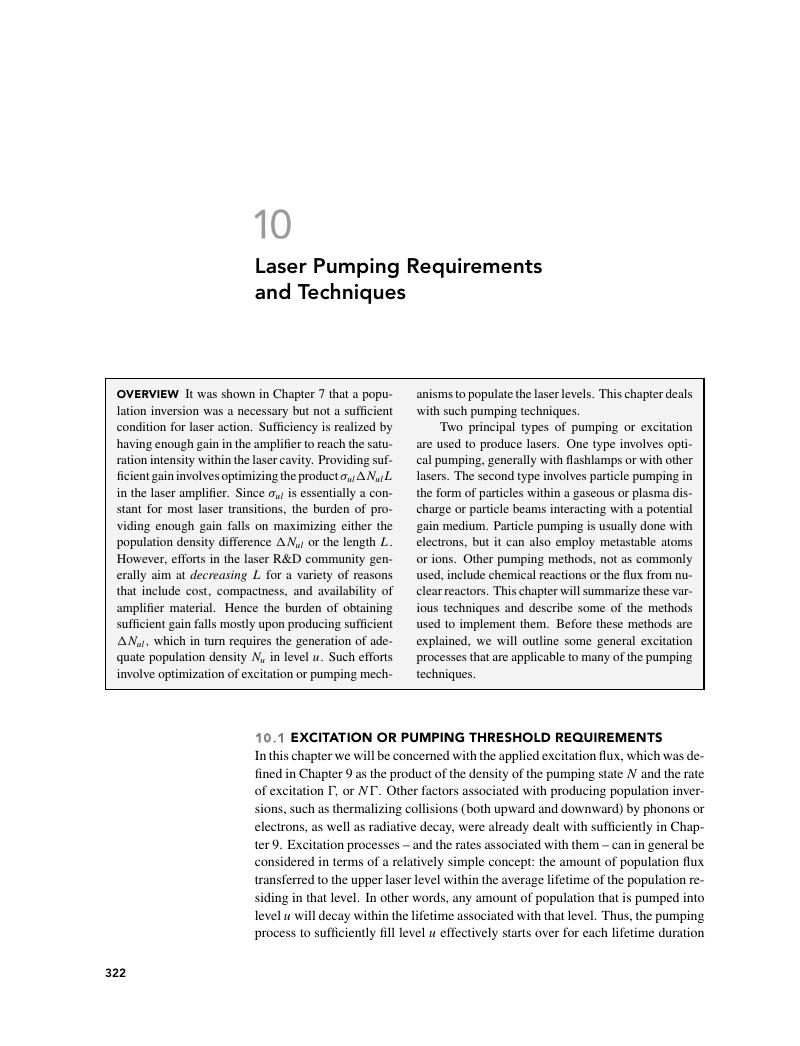Book contents
- Frontmatter
- Contents
- Preface to the Second Edition
- Preface to the First Edition
- Acknowledgments
- 1 INTRODUCTION
- SECTION 1 FUNDAMENTAL WAVE PROPERTIES OF LIGHT
- SECTION 2 FUNDAMENTAL QUANTUM PROPERTIES OF LIGHT
- SECTION 3 LASER AMPLIFIERS
- 7 CONDITIONS FOR PRODUCING A LASER – POPULATION INVERSIONS, GAIN, AND GAIN SATURATION
- 8 LASER OSCILLATION ABOVE THRESHOLD
- 9 REQUIREMENTS FOR OBTAINING POPULATION INVERSIONS
- 10 LASER PUMPING REQUIREMENTS AND TECHNIQUES
- SECTION 4 LASER RESONATORS
- SECTION 5 SPECIFIC LASER SYSTEMS
- SECTION 6 FREQUENCY MULTIPLICATION OF LASER BEAMS
- Appendix
- Index
- References
10 - LASER PUMPING REQUIREMENTS AND TECHNIQUES
Published online by Cambridge University Press: 05 June 2012
- Frontmatter
- Contents
- Preface to the Second Edition
- Preface to the First Edition
- Acknowledgments
- 1 INTRODUCTION
- SECTION 1 FUNDAMENTAL WAVE PROPERTIES OF LIGHT
- SECTION 2 FUNDAMENTAL QUANTUM PROPERTIES OF LIGHT
- SECTION 3 LASER AMPLIFIERS
- 7 CONDITIONS FOR PRODUCING A LASER – POPULATION INVERSIONS, GAIN, AND GAIN SATURATION
- 8 LASER OSCILLATION ABOVE THRESHOLD
- 9 REQUIREMENTS FOR OBTAINING POPULATION INVERSIONS
- 10 LASER PUMPING REQUIREMENTS AND TECHNIQUES
- SECTION 4 LASER RESONATORS
- SECTION 5 SPECIFIC LASER SYSTEMS
- SECTION 6 FREQUENCY MULTIPLICATION OF LASER BEAMS
- Appendix
- Index
- References
Summary

Information
- Type
- Chapter
- Information
- Laser Fundamentals , pp. 322 - 368Publisher: Cambridge University PressPrint publication year: 2004
